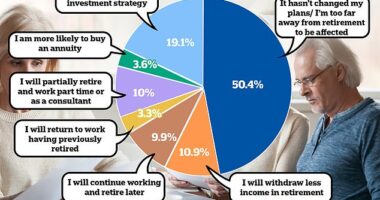SHOPPERS are raving over a bargain £40 kitchen appliance that could save on electric bills.
B&M is selling a low priced air fryer for customers who are keen to cut down on energy costs.
Shoppers have spotted the Mo Health Low Fat Health Air Fryer on shelves this week, priced at £39, says the Daily Record.
It comes as households strive to cut back on bills this winter and look for hacks, especially to stop themselves using money-sucking vampire appliances as much.
One excited fan posted the finding to Facebook group Extreme Couponing and Bargains UK, saying it’s “great for saving energy.”
The customer shared: “Got this £39 air fryer yesterday from B&M, which is selling about for around £100 on Amazon.


“I would say this is a halogen oven rather than air fryer, huge enough for a whole chicken, great for saving energy.
“Found some negative comments in Amazon, but they don’t happen to me. I’m happy with this good price.”
The fryer is available online and in stores too, though you may need to check delivery costs if you’re ordering home.
Otherwise, you can find your nearest B&M here.
Most read in Money
This is the cheapest we’ve found this product, but it’s always worth a search around other stores in case we’ve missed it for a better bargain.
Under the new price cap, using an air fryer for 15 minutes costs 13p.
Running an oven for an hour now costs 21p – so an air fryer could be more expensive if you use it a lot.
However, these costs are only estimates – it largely depends on how often you use which appliance and which models you own.
It also depends on what you cook – an energy expert told The Sun if you’re cooking breaded chicken, it’ll be cheaper to make it in an air fryer as opposed to an electric oven.
It’ll set you back just 11p to cook it, but it only needs to be in there for 39 minutes as opposed to 49 minutes in the oven.
The price to buy an air fryer again depends on where you go and which model you buy. For example, this Currys model costs £40 but this one from Asda is just £32.
But customers were excited to find B&M were selling this Mo Farah model for £60 less than Amazon.
One commented: “Haven’t used my oven since I bought this, you can cook basically everything in it, cheap to use and easy to clean, better than an Airfryer!!!”
Another wrote: “We bought this as a replacement for our air fryer, needed more cooking space. Use it most days and cook everything in it.”
And one more exclaimed: “I have this exact same one and I cooked four chicken legs and roasted potatoes at the same time and it cost me 47 pence from start to finish.”
More ways to save energy
Look out for overfilling the kettle – figures now show that boiling 300ml of water in a kettle will cost 1.56p under the current energy price guarantee. So making two cuppas in one day would cost just over 3p.
But using a covered pan on a gas hob once costs 1.15p.
That means it would cost you £2.18 a week if you boiled your kettle twice a day, but just £1.61 a week if you did the same but boiled the water on a gas hob.
To avoid spending too much, get your mug, fill it with water and pour that into your kettle – this way you are only heating up the water you’re wanting to use.
Meanwhile, according to Utilita, leaving a kettle switched on at the wall adds around a fiver to your annual energy bill.
You can also try alternatives to using your tumble dryer, because it costs around 38p per cycle under the energy price guarantee. So, if you ran a cycle every second day, it would cost about £68 a year.
Try instead using a heated clothes airer – It’s roughly 10p per hour to run a 300w clothes airer – if you had it on for four hours, it would cost 40p.
Switching all plugs and sockets off also helps – we spoke to an expert who saved £180 a year with this hack
Meal prepping could also cut your food bills in half to roughly a tenner a week
You could try cutting down on bills you no longer need to pay – read more about that here.
If you turn your thermostat down by one notch, it can help lower your bills by a whopping £80 a year.


And keeping it at a steady temperature will save even more.
But if measures in your own home aren’t enough, there’s still time to apply for government schemes that are designed to help you foot rising energy costs.









